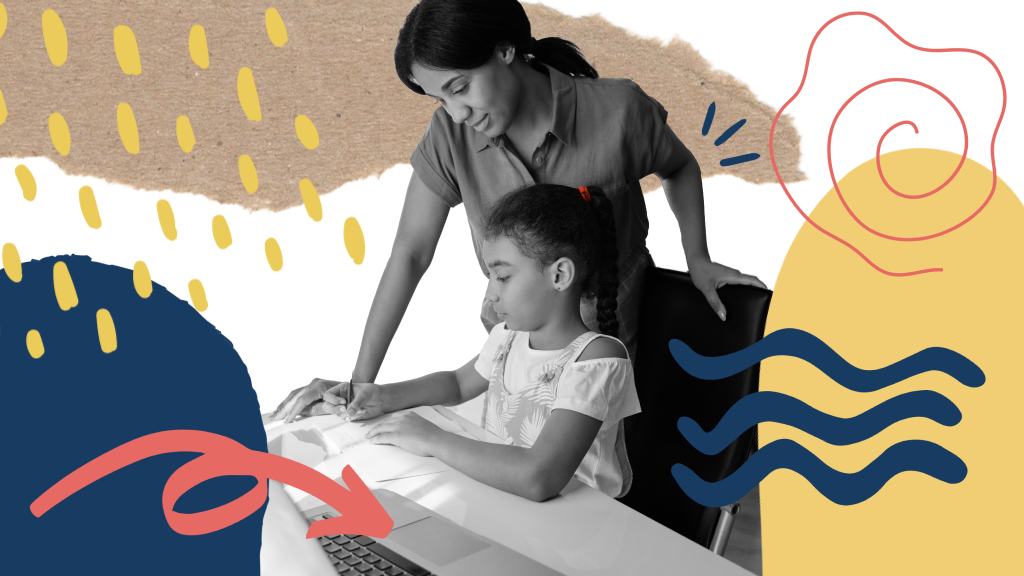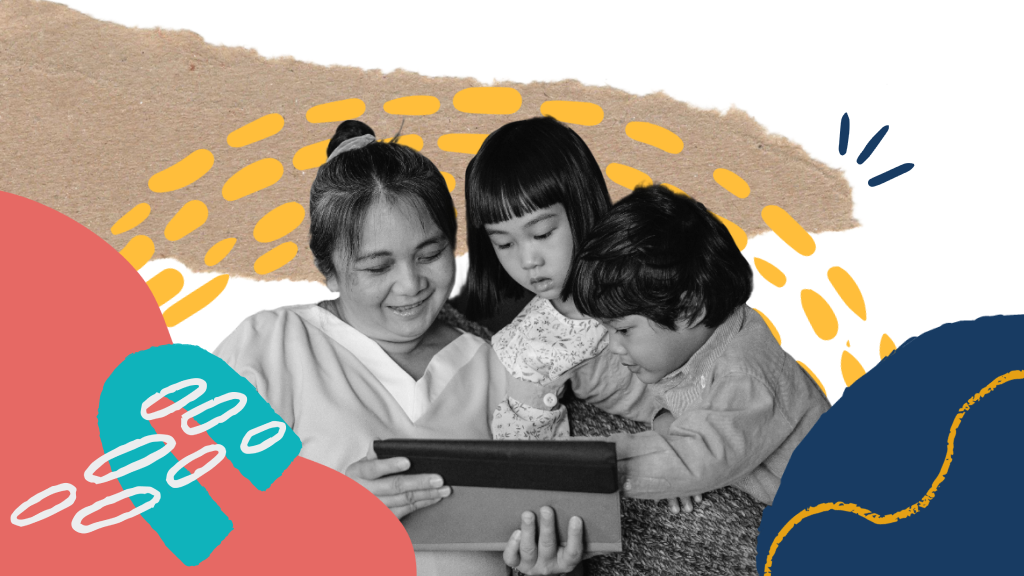How to Develop Student Self-Awareness through Social-Emotional Learning
5 Oct 2022

Social-emotional learning — or SEL — is an evidence-based approach to providing students of all ages with the essential personal and social life skills they need to achieve academic success and thrive throughout their lives.
Through the CASEL framework, students learn how to identify and manage their emotions, collaboratively problem-solve, feel and show empathy, maintain healthy relationships, and make responsible decisions. Research has shown that SEL improves academic outcomes, increases educational equity, and even benefits the economy in the long run.
The five SEL competencies are:
- Self-awareness
- Self-management
- Social awareness
- Relationship skills
- Responsible decision-making
Self-awareness skills underlie and facilitate the development of all the other SEL core competencies. This article will take a deep dive into what self-awareness is, why it matters, and how to support students by incorporating it into SEL teaching.
What is Self-Awareness?
Self-awareness is the ability to accurately assess one’s own strengths, limitations, and emotions and how these factors influence behavior. It requires cultivating mindfulness and an awareness of emotions, preferences, drives, and motivations.
Developing self-awareness skills helps strengthen learners’ confidence, optimism, and mental health. It also fosters a growth mindset, a strong sense of self, and a rich inner life. Self-awareness can help students navigate challenging situations both inside and outside of school and provide skills that will serve them throughout their lives.
Components of Self-Awareness
According to the CASEL framework, self-awareness comprises five key factors:
- Identifying emotions
- Accurate self-perception
- Recognizing strengths
- Possessing strong self-confidence
- Displaying self-efficacy
Let’s take a closer look at each of these components.

1. Identifying Emotions
The first component of self-awareness is students’ ability to identify their own emotions. Awareness of emotions can help learners communicate their feelings and find the most appropriate solutions for addressing them. It can also help them understand their own behavior — for example, the drive to be aggressive as a result of feelings of anger.
Another example of how identifying emotions can be helpful might be a student experiencing feelings of worry and fear before taking a test. They recognize that those are normal emotions to feel in that situation, and provided they are within manageable levels, they can respond to them in a healthy way.
2. Accurate Self-Perception
For any SEL strategy to work, the student’s assessment of themselves must coincide with reality. By cultivating a realistic understanding of themselves, students learn to respond appropriately to social cues and become thriving members of society.
Parents and educators can help children develop their self-perception by encouraging them to practice introspection and reflection.
3. Recognizing Strengths
When students are aware of their strengths, it can boost their confidence and guide them in focusing on the areas where they perform best. At the same time, it can help them to develop empathy toward themselves around their areas of weakness.
For example, if a student knows they’re good at math but struggle with history, they can feel reassured by the knowledge that their strength is in math and it’s okay not to be good at every subject.
Focusing on a student’s strengths instead of their weaknesses can help them cultivate a positive self-image and improve their social, emotional, and mental health.
4. Possessing Self-Confidence
Building self-confidence is the natural outcome of developing accurate self-perception and recognizing students’ strengths. Self-confidence is an essential component of SEL because self-confident individuals can place their thoughts and feelings before the world in a healthy and productive way, letting them grow and contribute positively to society.
5. Displaying Self-Efficacy
Building on the previous components of self-awareness is self-efficacy — a student’s belief in their ability to achieve their goals. Research indicates that self-efficacy is a driving factor behind academic achievement because the belief in their abilities motivates students to take actions that move the needle forward on their goals.

Why is Self-Awareness Important in SEL?
Self-awareness in SEL is backed by a robust body of research. Here are four reasons why self-awareness is a fundamental component of SEL.
1. It Supports Healthy and Integrated Identity Development
When students have a strong sense of themselves and their strengths, it can help them mitigate the effects of stress and the negative mental health impact of discrimination and trauma. It shifts their focus away from outer perspectives and lets them focus on their own perception of themselves, which can make them more mentally and emotionally resilient. Having a rich, accurate, and positive self-image provides a roadmap showing where they can improve their behavior and relationships and gives them the confidence to tackle deeper issues.
Self-awareness is the first of the five components of SEL because it is the foundation that underlies all the others. With a strong sense of self-awareness, learners can build skills in other areas, such as healthy relationships and decision-making.
2. It Provides a Sense of Purpose
Humans thrive when they have a sense of purpose. Helping young people develop a sense of purpose contributes to well-being and has been linked to improved physical and mental health.
When students are aware of their own strengths, preferences, and values, they can use those strengths to become active participants in their communities while living out their purpose.

3. It Connects Emotions to Behavior
Self-awareness teaches students how to identify their emotions and recognize how these emotions affect their behavior. This gives learners power over their emotions and the tools to address them or harness them productively.
Understanding emotions and their consequences helps children develop a growth mindset, build positive relationships, cultivate agency and self-determination, and achieve their goals.
4. It Builds Strong, Fair Relationships
Self-awareness isn’t just for learners — it includes teachers and education leaders, too. Educators who are self-aware are better able to create a positive classroom environment and, therefore, cultivate supportive relationships with students.
This helps them better understand the intersections of gender, race, ethnicity, class, ability, and sexuality and incorporate cultural responsiveness into their SEL strategies.
How to Include Self-Awareness Teaching in SEL
Because self-awareness is so pervasive and underlies all other aspects of SEL, teachers must take a multifaceted approach to incorporating it into SEL activities.
It’s not a singular concept that can be taught, digested, and applied — instead, educators need to introduce a number of competencies to help students build their self-awareness. Here are three ways to incorporate self-awareness into social-emotional learning.
1. Developing Identity
The first step in developing self-awareness is for students to have a nuanced understanding of their social, individual, cultural, and traditional identities. Help students examine the various faces of identity by looking at their families and cultures and identifying how these influence their life experiences and behavior. This will help them understand the evolving and dynamic nature of identity based on context and their perceptions of self and others.
2. Cultivating Belonging
By learning about belonging, students recognize the experiences of acceptance and belonging in cultures and identify how that makes them feel. This helps them identify examples of acceptance and exclusion in their own lives.
Over time, students develop the language to criticize these experiences in an effort to create a more accepting society. This involves challenging their own prejudices and biases, those of other people, and the expectations set by their academic environment.
Ways that teachers can cultivate belonging in the classroom include:
- Model inclusive behavior — students will often follow the teacher’s cue on how to handle social situations. So if you notice a student being left out by their peers, make sure to praise them and shine a light on their positive characteristics. This will help other students see them in a different light.
- Encourage identity-building by asking students to present something unique about themselves to their classmates. This could be anything from their hobbies or cultural heritage to a medical condition they may have previously been afraid to talk about.
- Learning, remembering, and pronouncing names correctly can go a long way to making students feel they belong, especially in a multicultural classroom setting. As well as learning them yourself, provide students with opportunities to practice each other’s names until they get them right.
3. Encouraging Agency
Through agency, students understand the differences between thought, feeling, and behavior. They learn to recognize emotions as carriers of information that need not be judged but need not be acted upon either.
Learners also realize that they can manage their feelings internally and change them through mindfulness and reframing negative thoughts. Agency also provides a more nuanced understanding of self-efficacy by embracing mistakes as opportunities for growth.

The following activities are just a few examples of ways teachers can encourage student agency:
- Daily self-assessments — set aside time at the end of each day for students to reflect on their performance and experience throughout the school day. Questions to ask could include:
- What did I do well today?
- What could I do differently tomorrow?
- Did I meet my learning goal today?
- What learning strategy did I use when I got stuck? Describe it.
- What was the most important thing I learned today?
- Use student learning surveys throughout the year to gauge their attitudes toward learning, interests, and reading habits. Using this information to inform your teaching elevates student voices and gives them ownership of their learning.
- Help students create a stamina chart where they set goals and track their progress against them. To use a stamina chart, students time themselves when working on independent work or reading. They stop the timer when they get distracted and record the total number of minutes they spend working. Then, they can set goals to help them improve their concentration over time.
Support Learners in Developing Self-Awareness
By supporting your children or students in developing self-awareness, you are giving them one of the most important skills they’ll need to thrive both in and out of school.
Lessonbee provides age-appropriate and inclusive content to help children of all ages develop greater self-awareness. Check out one of our free lessons or sign up for a free trial to access all our learning modules.
Read More

Human Trafficking: Understanding the Impact and How to Help

A Guide to Social Emotional Learning for Homeschooling Parents

How to Help Your Child Deal With Online Harassment

Online Safety for Parents: How to Safeguard Your Child in the Digital World


